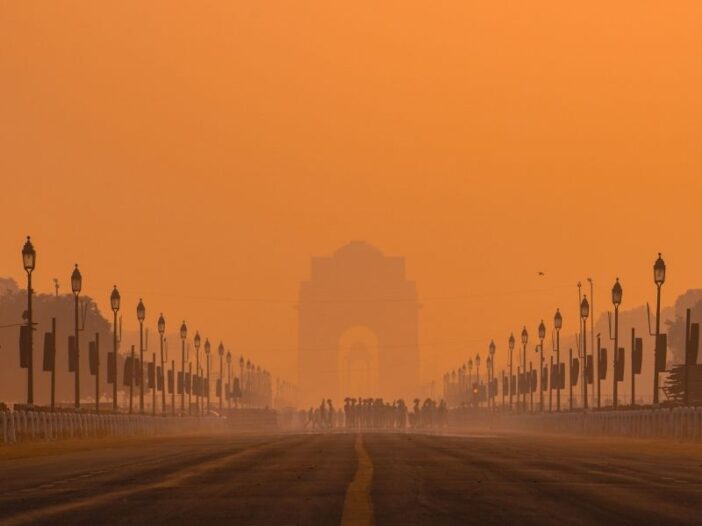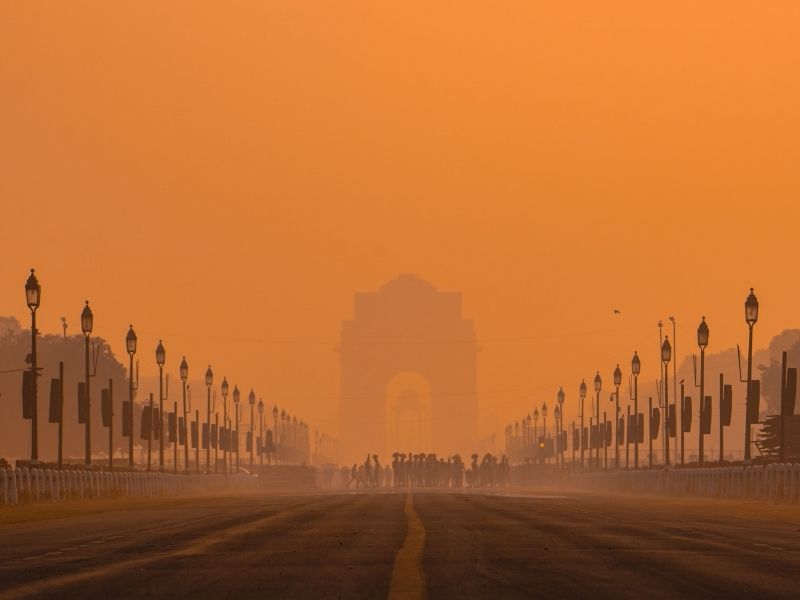
I was recently invited to join a delegation to India by the Smart Energy Council and Austrade to share how our technology can help them achieve Prime Minister Modi’s vision for 10,000,000 rooftop solar systems. Yes, ten million. In three years!
Here are some of the incredible things I saw and learned about the growing solar powerhouse that is modern India.
India is an astounding melting pot of sensory overload which blends thousands of years of tradition and modern technology across 1.4 billion people. My visit provided a wonderful and suitably diverse glimpse into many aspects of life, from meetings with senior Government officials about solar policy to rural doctors helping save lives and create income using solar.
As you would expect, the need for energy is profound. Our delegation’s goal was to share what we’ve learned from rolling out 4,000,000 rooftop solar systems in Australia and to look for opportunities to collaborate with Indian businesses and policy makers aiming to deliver PM Modi’s bold solar plan.
Our tour began in New Delhi where we navigated the chaotic streets that 37million people call home and kicked off with a humbling welcome reception at the Australian High Commission. His excellency the Australian High Commissioner Peter Green highlighted that our PM Albanese and PM Modi had made joint commitments to help each other deliver growth and energy security. Our expertise and India’s scale were an ideal fit, and we were here to help with Austrade’s assistance to deliver on those commitments. No pressure then!
We then visited the Government owned PowerGrid who owns the majority of the country’s energy generation, transmission and distribution systems. I was extremely fortunate to be part of a small private meeting with PowerGrid’s illustrious Chairman & CEO where we explained how our technology was helping Australian energy companies better manage the proliferation of solar energy.
This was followed by a round table discussion with many of their staff and the first of many gift giving ceremonies, before we headed back to the High Commission. Through the afternoon we had more fascinating round tables with local businesses eager to share ideas and challenges, culminating in a networking function at the High Commissioners home, surrounded by wonderous gardens, peacocks and with a fascinating and welcoming group of dignitaries.
Over the next few days in New Delhi we attended a smart energy conference, met with some of the largest solar companies in the country and learned about how our skills and expertise could benefit each other. I learned quickly that every meeting would be accompanied by delicious food and generous hospitality. Yum!
Before we flew out in the afternoon, I took a short sight seeing adventure to a local Mosque and market. New Delhi is in a perpetual state of peak hour traffic so to save time and add some adventure I used Uber to order a motorcycle taxi (the uber choices in India are as amazing as the country!).
My rider threw me a small helmet and confidently navigated freeways, narrow laneways and squeezed us between trucks, rickshaws, bicycles and buses delivering me safely. I admit, I spent parts of the trip with my eyes closed.
After wandering through smells, sights, sounds and history I returned on another bike and our delegation headed to the airport with our delegation to fly to Ahmedabad, a major city in India’s north and PM Modi’s home state of Gujarat.
After a quick freshen up and a salubrious traditional meal based on the former royal family’s personal favourites a small group of us took the chance to exercise our huge feast off with a late night trip to a large market. I can safely say I’ve never seen so many people crammed into a few teeming streets where anything and everything could be found.
We met many wonderfully friendly locals, especially the kids who had a good grasp on English and were eager to hear our stories and have their photos taken. We witnessed utter destitution, middle class wealth and were deeply moved by their devotion in ancient temples.
I also learned that it is perfectly acceptable to ride your rickshaw or motorcycle in between tens of thousands of bustling shoppers, right to your favourite stall. A convenient trick I might try at home some time!
The next day with a few hours to spare before our first meeting, I walked Ahmedabad’s streets and found my way to Gandhi’s ashram where his famous pilgrimage began and world leaders used to visit him. This very spiritual place on the edge of the city centre was surrounded by a huge slum area again highlighting the dichotomy that is Indian life.
Home to thousands and common in India a delegate described visiting such a home, proudly swept and kept as clean as possible with the most rudimentary basics of life. The only source of light and warmth was a small fire burning plastic waste in the centre of the ramshackle tin hut, highlighting the life giving benefits that a tiny solar panel and battery can bring to those in need.
On my way back I stumbled into a stunning cacophony which turned out to be a street wedding. Bedazzled women danced like their ancient ancestors and glamorously dressed men paraded like peacocks to the frantic drums, Indian bagpipes and horns. I shared the joy for only a few minutes before my rickshaw driver insisted it was time to leave.
We were honoured to be hosted by the Gurujat Government and around 50 dignitaries from local universities, business, utility companies and training institutions. The opening speeches and introductions took a very long time with so many in attendance but we quickly moved into extremely productive wide ranging discussion about how we had overcome many challenges which India could see it would face as they accelerated towards tens of millions of solar systems, a highlight of the trip.
This was followed by a huge banquet and ubiquitous business card exchanges before our next appointment at a local university.
We visited their almost complete training laboratories for solar and electric vehicles – electric two, three and four wheelers are ramping up rapidly. We then heard about their incredible technological prowess and their progress and urgent need for training programs.
Rolling out millions of solar systems has its challenges, but pales into insignificance compared to the need to train hundreds of thousands of installers and tradespeople in a very short time where language and dialects change every fifty kilometres or so.
Once again, Australia’s progress in accreditation, training and technological upskilling was invaluable and will undoubtedly help guide their progress.
The next day we visited one of the world’s first fully solar powered villages, which sits alongside a world famous and totally fitting 1000 year old Sun Temple.
The majority of the humble village homes are equipped with 1kW solar systems which create life giving extra income in this relatively poor village and is backed up by a state of the art 6MW/13MWh solar battery system on the edge of town.
We learned that every one of the thousands of solar panels is cleaned daily by a small crew of local labourers and how the villagers eagerly use their smartphone apps to monitor their own systems.
The sunset tour of the Sun Temple was an astounding and somewhat emotional experience for many of us. Not just because of the mathematical and cosmological wizardry of the temple, or how it had (mostly) survived despite invasion and wars, or its sheer stunning beauty but because it paid homage to the life-giving force of the sun.
It connected the ancient mystical life-giving wonder of the sun with today’s need for clean, cost effective energy, a fact that was not lost on any of us. We departed, equally inspired and exhausted for our long drive home through rural villages and towns.
Our last day in Ahmedabad included more round tables at modern universities, more solar farms and a pilot PV manufacturing facility used to train graduates in how to build and operate the many new factories springing up around India.
After flying back to New Delhi our last official visit was to a wonderful AgriSolar facility an hour or so outside the main centre. Because India can never blow your mind enough, yet again, our minds were blown. Here, we met two doctors who ran a local hospital that struggled to get good organic produce, fresh milk and reliable energy to help their patients. They had built several megawatts of solar on two farms which helped their cause immeasurably.
By elevating the solar arrays, they created shade for crops (Gujarat is very hot and dry); tomatoes, potatoes, chilli, beans, herbs and chickpeas were all thriving, salinity was reduced and the water table had improved as a direct consequence. The local landowners generated some valuable income from energy sales, the local network was more reliable and even the cows produced extra milk. It was a prime example of solar symbiosis in many, many ways and absolutely inspiring to see.
After (yet another) wonderful feast and gift exchange we took a final long hot drive back to our hotel and started preparing for our trek back to Australia.
Just how or when Australian products and services might take advantage of opportunities in India remains to be seen but one thing is for sure – our technology has a huge opportunity and incredibly valuable role to play in their road to ten million solar rooftops.
We would like to offer our particular gratitude and thanks to the Smart Energy Council, Austrade, the Australian High Commission and all the wonderful delegates and dignitaries who made this memorable and valuable experience possible.

